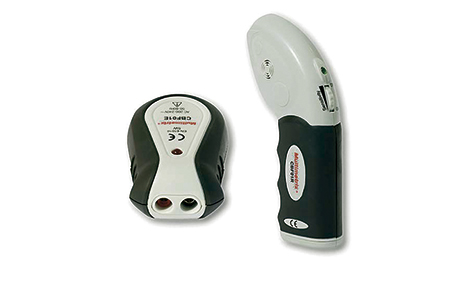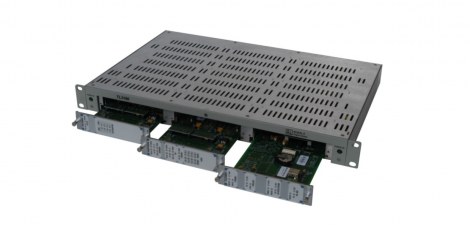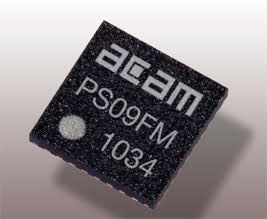- And how Yokogawa's power analyzers play a key role in efficiency testing of electric vehicle motors –
Yokogawa's power analyzers (wattmeters) are playing a key role in tests designed to optimize the efficiency of a new generation of motors for electric vehicles being developed by the German company FEAAM, specializing in transmission systems, in collaboration with the Institute for Electric Motors and Actuators from the Universität der Bundeswehr (University of the Federal Armed Forces) in Neubiberg near Munich.
The new motors are being developed as part of a research project to explore how to increase the efficiency of induction motors, in order to challenge two alleged limitations that hinder market acceptance of electric cars, namely the short range and high purchase price. In this research project drive train components are studied, and the tests are based on driving cycles: the same concept used in efficiency and emissions tests of internal combustion engines. An important element of this approach is that the results do not depend on the efficiency under full load conditions, but on partial load.
Toothed winding (“Single-tooth winding")
A promising approach for optimizing the efficiency of electric motors is the concept of asynchronous motors with concentrated windings. Unlike a conventional distributed-winding induction motor, where the coils are wound around several lamination teeth, the windings in these motors only use a single tooth. Although this technique has been known for a long time, there have been no practical applications because of the associated harmonic interference.
In this joint research project, the FEAAM-University team analyzed the magnetic fields in the motor very precisely, through a combination of simulation and practical experiments. As a result, they were able to devise various measures to suppress unwanted harmonics. The closer the harmonics are to the fundamental work wave, the more they can interfere with motor operation, causing electrical losses or acoustic noise.
Lowering the impact of harmonics is achieved by a special winding technique in which coils on adjacent teeth are wound in opposite directions. With the correct setting of the number of wires in each coil, harmonics can be reduced. In the research project, the structure of the coils was first simulated using mathematical models, to later verify the effects through measurements.
on the test bench
The University's Institute for Electric Motors and Actuators has several facilities for testing electric motors, with a power of up to 220 kW and a maximum torque of 2.000 N·m. The test benches are designed for four-quadrant operation, and are equipped with high-precision torque and speed sensors, power analyzers, and oscilloscopes. They are used both for student projects and for research and collaborative work with industry.
The development process took around two years, and also aimed to optimize manufacturability, reduce production costs and achieve high performance under part load conditions.
Floor Plans
The end result is of interest to the automotive industry and other industrial sectors. Currently there are several patent applications and the first prototypes have been developed for industrial partners. The prototype of the new induction motor is equivalent to a conventional traction motor for an electric car, and has a power of approximately 50 kW.
The motor is driven by three phases of up to 400 V. The currents and voltages are measured by using transducers in each phase, thus identifying asymmetries. In addition to the efficiency measurements, a recording of the torque and speed characteristics is carried out, which is used for the optimization of the mathematical models. As the rotor resistance, and therefore also the losses, increases with the temperature, this is kept constant using a cooling liquid, and is monitored by means of a thermal imaging camera.
In addition, measurements are taken in different driving cycles. Power and efficiency tests are performed using Yokogawa's WT1600, WT1800, and WT3000 power analyzers. The results, which include measurements of torque, speed and resulting efficiency, are automatically transferred to an Excel sheet.
“We use several generations of Yokogawa power meters, and we are very satisfied with their operability and test results,” says Professor Dieter Gerling, Ph.D. in engineering. "It is particularly important that we get very accurate in measuring efficiency, even when it is over 97%, and we have found that we can have complete confidence in these instruments."
Mass production
Due to its ease of production and its greater efficiency in partial load conditions, the new induction motor brings advantages both in terms of costs cp,p of autonomy.
The new winding technology will also bring new advantages in production. The stamped parts for the stator can be rolled individually and then simply fitted together on the motor. This is in contrast to conventional induction motors, where the plates are assembled first, and then the winding is applied in a much more complicated way. Due to this complicated production process and the high costs associated with this type of engine, they are not ideal for the production of several million units per year, which are the figures typically demanded by the automotive industry.
“In the past, electric motors in this power range were produced by medium-sized companies, in quantities of a few thousand per year,” says Professor Dieter Gerling. "In the automotive industry we are talking about significantly higher numbers, so the associated costs are more important."
"This industry has a lot of experience in cost management," he adds. "This of course also applies to power electronics and battery technology."
Currently, German companies are global leaders in the automotive sector, but the number of purely electric vehicles they produce is still very small compared to French, Chinese and, above all, Japanese manufacturers.
According to Professor Dieter Gerling, German car manufacturers have already caught up, at least in terms of technology, to their competitors, so they will soon be in a position to offer similar products.
Electric mobility
In addition to the electric motor, the FEAAM and University team has also worked on optimizing the power electronics circuitry, as well as the motor control systems. Once again, there are already proposals to optimize efficiency under part load conditions. Furthermore, they are also investigating electrical wiring systems in vehicles and aircraft. In all these areas there is still, according to Professor Dieter Gerling, great potential for improvement.
Until now, not much attention had been paid to weight and efficiency issues in electric motors, but this situation has changed radically with the advent of electric mobility. In particular, the production volumes inherent in the automotive industry should lead to massive cost reductions. The members of the team from the Universität der Bundeswehr are convinced that the future belongs to vehicles equipped with electric motors.







